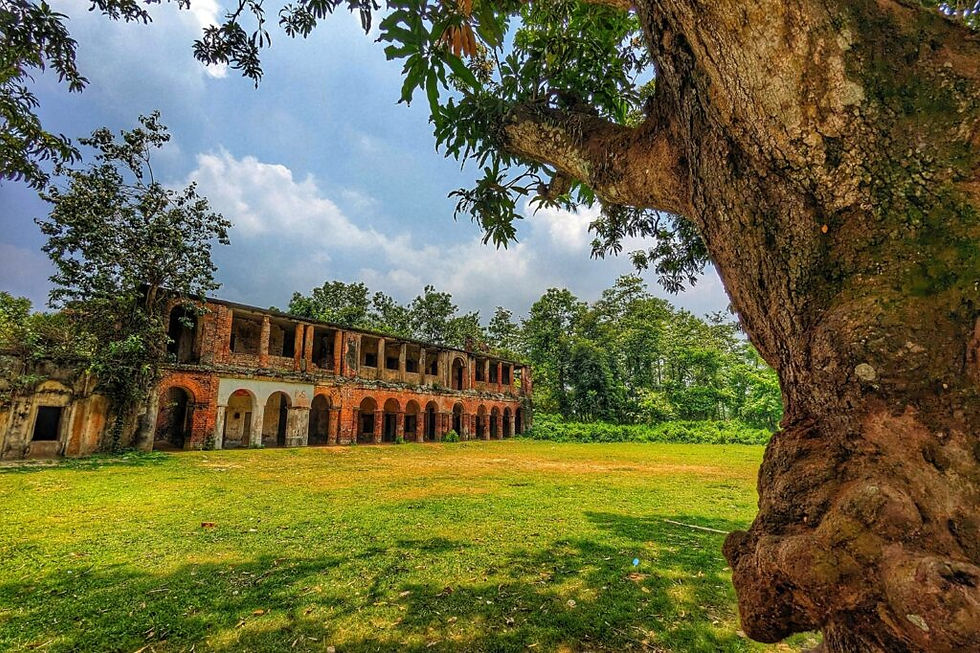Old Railway Heritage – Early Colonial Railway Stations and Bridges
- Niharika Momtaz

- Sep 7
- 3 min read

The railway network across the Indian subcontinent went beyond mere travel; it became one of the most lasting marks of British rule. Early railway stations and bridges, many of which are still in use, showcase a mix of innovative engineering, impressive architecture, and colonial ambition. These historic structures are more than old buildings; they are cultural landmarks that tell us how the railways changed society, economy, and the very landscape of South Asia.
The Arrival of Railways in Bengal
The East India Company began laying tracks in the mid-1800s, driven mostly by colonial goals. The first passenger service in the region rolled out in 1854, linking Howrah and Hooghly, close to Calcutta. Before long, routes spidered across Bengal and what is now Bangladesh, moving raw goods like jute, tea, coal, and indigo toward the coast.
Tracks turned into the colonial economy’s backbone, linking ports with the interior. For the British, stations and bridges were more than roads and rail; they stood for power, progress, and the reach of the Empire.
Colonial Railway Stations – Architecture and Legacy
Colonial railway stations were built to impress, blending Victorian Gothic, Indo-Saracenic, and Neoclassical styles. They featured lofty arched facades, towering clock towers, and vast waiting halls. Bright red bricks and elaborate ornamentation turned them into standout landmarks, clearly different from the simpler local buildings around them.
Today, survivors of these grand stations still stand in places like Rajbari, Sirajganj, and Lalmonirhat. Even in their broken state, their tall arched windows, wide stone platforms, and old signal rooms still speak to the engineering genius of the era.
More than striking buildings, the stations served as crossroads of cultures. Travelers from distant districts, different faiths, and varied social classes met here. This constant flow of people made the railway a tool of social change and a quiet arm of colonial rule.
Colonial Old Railway Heritage – Engineering Marvels
Railway bridges were another signature achievement of colonial builders. In the flat and river-rich lands of Bengal, crossing waterways was non-negotiable. To meet the need, the British employed bold engineering. Steel trusses, solid stone masonry, and sturdy iron girders—most of them shipped from Britain—formed the bridges that still carry trains today, linking rivers and districts as they once linked people and empire.
One outstanding example is the Hardinge Bridge, finished in 1915, which sweeps nearly a mile over the Padma River. At the time, its length and design were engineering feats, and it vitalized travel between the eastern and western halves of Bengal. The Sara Bridge and the Kalurghat Bridge, also built during the colonial years, survive today as proud tokens of the Industrial Revolution that the British Empire brought to the region.
These bridges did more than carry people and goods; they announced Britain’s engineering might and were easily converted into military and administrative advantages when needed.
Impact on Society and Economy
The Old Railway Heritages were built mainly to move raw goods to ports, yet they also changed everyday life in unexpected ways. Peasants now sent rice and jute to distant markets, families shifted to the cities for jobs, and new trading towns sprang up along the tracks. Whole landscapes changed, too, as the railway pushed aside boats and barges for iron rails and bridges.
The railways also fed the rise of Indian nationalism. Train stations buzzed with the sound of arriving newspapers, pamphlets, and political debates. Revolutionaries rode the same trains that carried rice to ports, while colonial rulers counted on the same network to troop into restless districts and protect the Empire’s seams.
Present-Day Heritage and Preservation
Across Bangladesh, old railway stations and bridges from the colonial period still carry passengers and goods, even as some succumb to rust and vines. Shabby plaster peels, iron girders weep rust, and rain-soaked platforms grow wild grass, each detail speaking of the past. Yet sturdy survivors like the Hardinge Bridge keep trains moving, proving that solid design can outlast time.
Caring for these sites matters. They are more than reminders of colonial rule; they are records of engineering skill, local culture, and quiet defiance. If we repair them thoughtfully, they can become living museums, inviting travelers to explore the layered stories embedded in the railways of the subcontinent.
The colonial-era railway stations and bridges we see are not merely trophies of engineering; they are emblems of both restraint and renewal. Built to serve the empire, they were later adopted by the very peoples whom the empire had sought to subdue, aiding in the forging of new nations.
When we board sleek new trains or roll across modern spans, the weathered piers and rusted arches in our view remind us of that journey. Once symbols of dominion, they now stand as quiet reminders of the strength, continuity, and layered identity we carry forward.




Comments